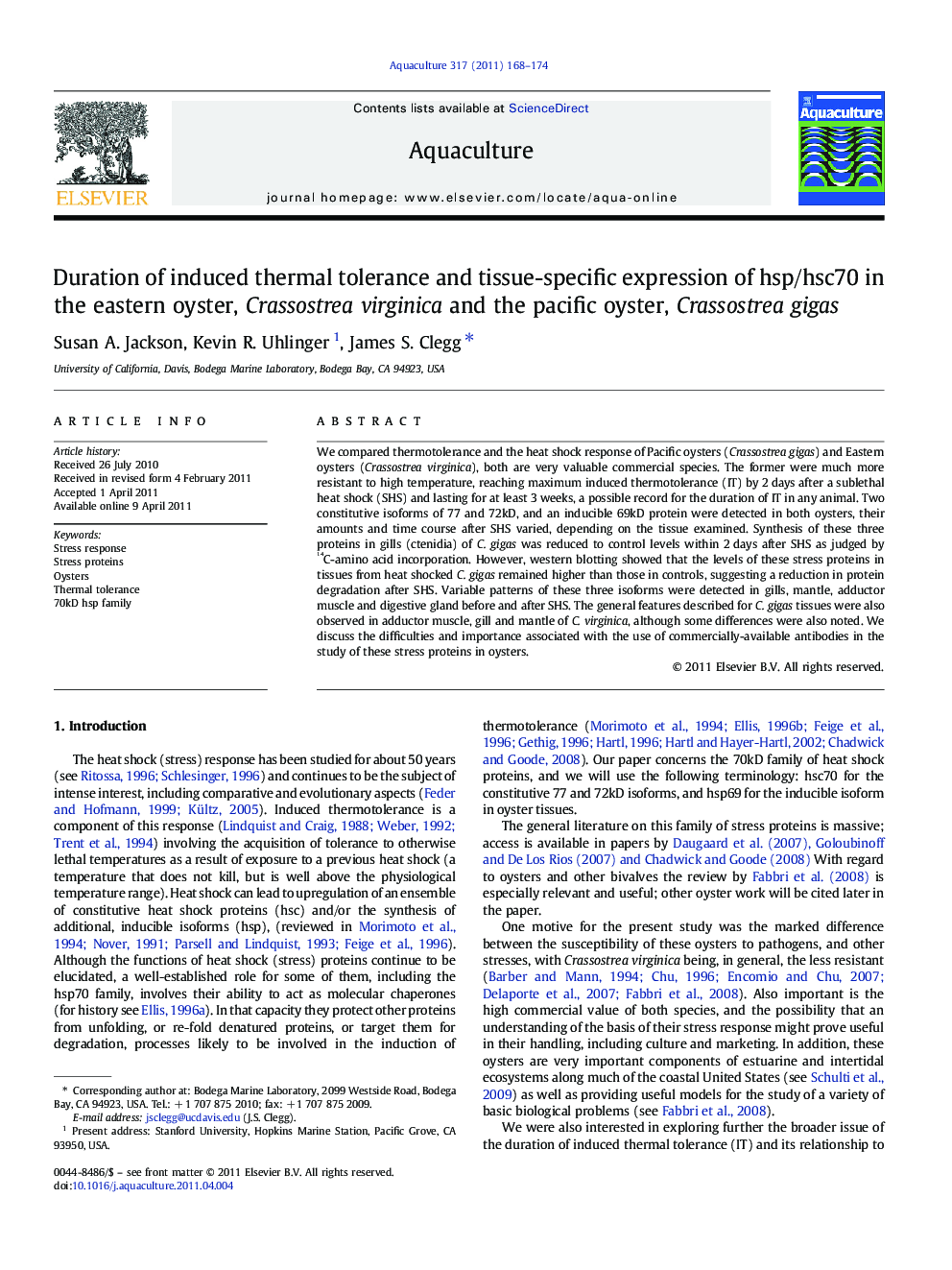| Article ID | Journal | Published Year | Pages | File Type |
|---|---|---|---|---|
| 2423262 | Aquaculture | 2011 | 7 Pages |
We compared thermotolerance and the heat shock response of Pacific oysters (Crassostrea gigas) and Eastern oysters (Crassostrea virginica), both are very valuable commercial species. The former were much more resistant to high temperature, reaching maximum induced thermotolerance (IT) by 2 days after a sublethal heat shock (SHS) and lasting for at least 3 weeks, a possible record for the duration of IT in any animal. Two constitutive isoforms of 77 and 72kD, and an inducible 69kD protein were detected in both oysters, their amounts and time course after SHS varied, depending on the tissue examined. Synthesis of these three proteins in gills (ctenidia) of C. gigas was reduced to control levels within 2 days after SHS as judged by 14C-amino acid incorporation. However, western blotting showed that the levels of these stress proteins in tissues from heat shocked C. gigas remained higher than those in controls, suggesting a reduction in protein degradation after SHS. Variable patterns of these three isoforms were detected in gills, mantle, adductor muscle and digestive gland before and after SHS. The general features described for C. gigas tissues were also observed in adductor muscle, gill and mantle of C. virginica, although some differences were also noted. We discuss the difficulties and importance associated with the use of commercially-available antibodies in the study of these stress proteins in oysters.
